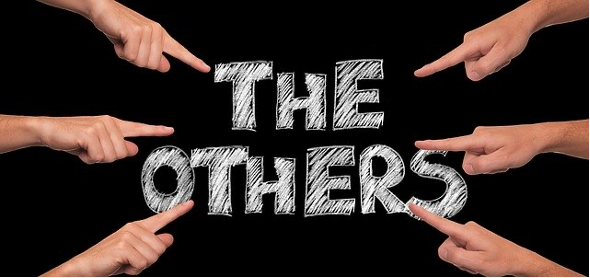Unit 2 Understanding Faulty Decision Making

Source: thinkingbeyondnumbers.com
Overview
In this second unit, we will dive into some of the things that trip us up in making decisions, even though we are trying to make the best decision possible. There are certainly external influences that can steer us in the wrong direction. Simple things like a dramatic change in the weather, a tragic family loss, or an unexpected promotion can open our eyes to seeing things through the lens of depression, excitement, or pure joy.
The following quote is taken from Why Good Leaders Make Bad Decisions. It is based on the premise that the faulty decisions we make are not caused by external influences but rather, our own internal influencer: the brain.
“Decision making lies at the heart of our personal and professional lives. Yet the daunting reality is that enormously important decision made by intelligent, responsible people with the best information and intentions are nevertheless hopelessly flawed at times. In part, that’s due to the way our brains work.” (Whitehead, et al. 2009, p. 147).
It is our brain that has recorded the events of our life. The brain becomes our teacher telling us how we should respond. As a personal example: When I was 8 years old and riding my bike, a large German Shepherd dog ran out and bit me on my backside. I was scared, mad, and surprised; I cried. Today, when I see a German Shepherd, my thoughts flash back to the bike ride and I am overwhelmed with negative emotions. On my walking path a family recently added a German Shepherd as a pet. I changed my walking path.
Can I do anything about how I process this? Does my brain’s memory and recollection have to rule my decision making? Yes, if I let it. No, if I want it to change.
Like most things, admitting the truth and realizing how our thinking is swayed by the past can be enough to propel us into a fresh and objective approach to our decision making.
Topics
Unit 2 is divided into the following topics:
- How to avoid faulty decisions
- What is losing your way in a decision process
- Good leaders: Awareness of red flags in the decision making process
Learning Outcomes
When you have completed this unit, you should be able to:
- Explain the key concept of faulty decision making
- Analyze how leaders can lose their way in decision making
- Describe red flags and how they can turn the outcome of a decision
Activity Checklist
Here is a checklist of learning activities you will benefit from in completing this unit. You may find it useful for planning your work.
-
Activity 2.1: Read HBR on Why Good Leaders make Bad
Decisions
-
Activity 2.2: Explore the faulty decisions made by
Matthew Broderick and An Wang
-
Activity 2.3:
-
Watch TED Talk: Why We Make Bad Decisions, Dan Gilbert
-
Watch TED Talk: Are We in Charge of Our Own Decisions? Dan
Airley
-
Watch TED Talk: Why We Make Bad Decisions, Dan Gilbert
-
Activity 2.4: Create a mind map that displays the
seven red flags in decision making
- Activity 2.5: Review Key Terms
2.1 Resources
Here are the resources you will need to complete this unit.
- Harvard Business Review On Making Smart Decisions: Why Good Leaders Make Bad Decisions
- TED Talk Videos
2.2 What are Faulty Decisions?
When things go wrong or we are unhappy with a decision outcome, our mind often points fingers at the other guy.

Image by Gerd Altmann from Pixabay
When we are happy with the outcome of a decision, our mind wants people to notice us.

I did well, right?
Photo by Guillermo Latorre on Unsplash
While Unit 1 introduced us to decision making, Unit 2 begins by introducing the ways decision making can have an outcome that we did not intend. The authors of Why Good Leaders Make Bad Decisions call this phenomenon “faulty decision making”.
No one begins a decision making process by thinking it will be flawed. Yet that is what can happen. The reason is that we see decision options through the lens of the memories we have in our brain.
The decisions made by our brain are “a complex process that integrates information for as many as 30 different parts of the brain” (Whitehead, et al. 2009, p. 146).

Photo by George Pagan III on Unsplash
The Key Concepts of Faulty Decision Making
Pattern Recognition: If we think we have done everything by the book and yet it still turns out wrong, rather than blaming someone else, we have to recognize that our decision was likely based on a pattern in our brain. We recall a response that served us well in the past. However, while past situations are similar, our current overall context is different. Without looking at the differences, we respond today as we did in the past. The faulty decision occurs because our brain recognizes only the similarities and not the differences. Be sure to read the story about Matthew Broderick and his decision, based on pattern recognition, that led to the devastation of New Orleans during hurricane Katrina. (Whitehead, et al. 2009, p. 146).
Emotional Tagging: This is another example of how our brain trips us up when we are trying to make a good decision. Can you think of a time when you made a decision, was based on emotions? Be sure to find the story about An Wang’s decision based on emotional tagging. (Whitehead, et al. 2009, p. 148).
Emotional tagging and Pattern recognition – Always faulty? The things that lead us to making faulty decisions for ourselves often have minimal impact in the big scheme of things. However, during the COVID-19 pandemic, the WHO (World Health Organization) used pattern recognition for making recommendations for the world. At the beginning of the pandemic, the WHO advisory said the disease was contagious prior to symptoms. As additional studies were done, WHO stated the COVID-19 is not patterned after other viruses; it is transferrable only after symptoms are evident. Was this a bad decision or a decision simply patterned after similar past circumstances?
Source: cbc.ca
As another example, if a car darts in front of you on the freeway, you cannot take time to process the situation. Pattern recognition causes your brain to react automatically and you decide to move into the other lane.
Emotional tagging can drive us into making faulty decisions, but they also can be a way to actually prevent emotional damage. As an example: An unhealthy relationship in your past will bring red flags of warning against getting into an unhealthy relationship. Our emotional tags will stand guard.
Activity 2.1: Title (e.g. Read and Reflect)
Read HBR On Making Smart Decisions: Why good leaders make bad decisions, Campbell, Whitehead, and Finkelstein
Note that the Learning Activities are ungraded, unless otherwise specified. They are designed to help you succeed in your assessments in this course, so you are strongly encouraged to complete them.
Activity 2.2: Case Studies
Pattern Recognition and Matthew Broderick
-
In your Group, review and discuss the story of Matthew Broderick’s
Decision regarding Hurrican Katrina. How could he have avoided the
decision based on pattern recognition of past experience? (Whitehead, et
al. 2009, p. 148).
- Next, reflect on your own experience based on pattern recognition.

Image by Gabe Raggio from Pixabay
Hurricane Katrina was a Category 5 tropical cyclone that occurred in August 2005, which caused $125 billion in damage, particularly in the city of New Orleans and the surrounding areas, and over 1,200 deaths.
Source: Wikipedia
Emotional Tagging and An Wang
-
In your Group, review and discuss the story of An Wang’s Decision.
How could he have avoided the decision based on the emotional tagging of
past experiences? (Whitehead, et al. 2009, p. 148).
- Next, reflect on your decisions based on emotional tagging.
Source: How emotional tagging can push people to make bad decisions
2.3 What is losing your way in a decision making process?
Watch Out There are 3 things that Campbell, Whitehead and Finkelstein see as factors to watch out for in our decision making. Our brains may tell us we are making good decisions, but our actions get us side-tracked. For example, we make faulty decision due to things like emotional tagging and pattern recognition. These are the “Watch Out” signs or Red Flags.
- Inappropriate self interest: I am forming a team. I pick people who have a stellar work history, get along well with others and have been with the company a long time. These sound like great characteristics for my team, but then I realize, these are the people who really are my best friends. As I review my team-creation, I can see that none of the new team members has the expertise I need. They may be my friends, but that doesn’t make them qualified.

Photo by Giulia Bertelli on Unsplash
- Presence of distorting attachments: In 1915, Henry Ford had developed a highly successful car manufacturing plant. The new companies found beauty in manufacturing cars with new colors like red and blue. Henry Ford saw beauty only in the color black. He said, “You can have any color as long as it’s black.” His attachment to his black cars was distorted. As other cars came along with the new colors, it took him years to believe he should change. Source: Model T had many shades; black dried fastest
- Presence of misleading memories: As we dream about the good ole’ days, we are holding onto our memories of days gone by. Things change! If we can be honest, past experiences were not really all that perfect as our brains lead us to believe. These are misleading memories.
Activity 2.3: Watch TED Talk
Watch and reflect on the following TED Talk videos:
Why We Make Bad Decisions, Dan Gilbert
Are We in Control of Our Own Decisions? Dan Ariely
2.4 How to identify the Red Flags
“You can often counteract biases by exposing the decision maker to new information and a different take on the problem.” (Whitehead, et al. 2009, p. 152)
The authors have described a 7-step process to identify a faulty decision before it actually happens. The seven red flags in decision making are displayed below.
Practice placing the steps in the correct order:
Activity 2.4: Mind Map Activity
Create a mind map that displays the seven red flags in decision making in the correct order. Feel free to add images or drawings beside each step.
Next, highlight the step you believe is the most important and explain why. Include an example from your professional (or personal) life.

Image by DarkmoonArt_de from Pixabay
Bonus! There are lots of free mind map templates on Canva. Check on Canva.com for design ideas! Or if you want more control over the structure of your map and many more export options, check out draw.io.
Share your work with your Group.
Summary
In this unit, you learned that the decisions we think we are making in the right way may not be right at all. This is not because we are a poor leader or a bad person. It is because our brain is leading us in ways of which we are not aware. As Dan Ariely pointed out in his video “Are We in Control of Our Own Decision?”, demonstrates that our brains see things in one way and reality may be another.
Thankfully, there are processes we can use to steer us away from the faulty decisions such as including others, checking for red flags, and being open to considering all options.
“Dwelling on past bad decisions you’ve made only allows those decisions to keep defining you. Forgive yourself & move on.” - Mandy Hale
Checking your Learning
Before you move on to the next unit, reflect on the following:
-
Describe the difference between a faulty decision
and using a decision model.
-
Analyze the effectiveness of the Red Flag Identification Plan. Is it
something you would use? Why or why not?
- Consider creating a 3-item list you will follow to avoid faulty decision making. Would that be more practical and yet maintain effectiveness?